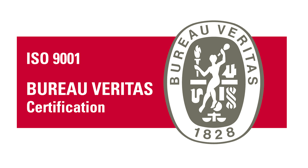Article

"May the Force be with Use"
No matter where your trademark is filed or registered, its protection is conditional, in one way or another, on its proper use.
A review of this obligation borne by the trademark proprietor of the one that is often considered burdensome but often turns out to be crucial.
The essential purpose of a trademark is in the interest of the consumer, to distinguish the products and services of one enterprise from those of another. Therefore, it is in return for this obligation the proprietor can is granted an exclusive and indefinitely renewable monopoly right.
- What is at risk for an entitled party, in the case of non-sufficient use of their trademark?
The conditions of protection and duration of the right will vary depending on the countries and legal filings relating to the trademark.
But, the principal condition of use remains the same.
In certain territories, intended or effective use of the sign will be a sine qua non condition in the trademark registration, renewal or even existence. Within almost all legal systems, a lack of use of a trademark results in third parties having the opportunity to request invalidation of the trademark right, and also the unenforceability or rejection of a suit.
Therefore, the penalty for absence of sufficient use or inability to produce proof of such a use is severe for the trademark owner.
- How can one guard against revocation resulting from lack of use?
Make good use of the company’s documentation relating to the trademark
Given the evolution of technology in archiving, tracing and digitalization, it is becoming easier to preserve substantiating evidence for the long-term. The requirements of Trademark Offices and courts reinforce and standardize the demonstration of poof.
For this reason, we consider it is important for our readers to gather evidence progressively throughout the life of the trademark, in an organized and systematic fashion, to make it quickly exploitable. For example, in the case of an opposition procedure or an invalidation of a request or registration of a trademark in the European Union, the holder of the prior right (subject to this trademark being registered for over five years) is generally required to justify real and serious use of their trademark in a clearly defined period of five years. The European Union Intellectual Property Office (EUIPO), requires a structured case file, written in the language of the proceeding (note: For the proofs of use that were not produced in the language of the proceedings; it is at the discretion of the Examiner to ask for translations of “necessary” elements), and within a specific time period.
Although the assessment of genuine use is in essence factual and appreciated as a whole, the supporting evidence must be numbered, described in detail, indexed and written in a way that will allow the reader to determine immediately and cumulatively:
- The place ;
- The duration ;
- The scale ;
- The nature of the use.
If the evidence is not presented in this way, it risks not being taken into consideration, which will turn into an automatic rejection of the pending action and/or could lead to an invalidation of the right.
When gathering documentation for evidence, it is important to show how specific sources are linked together: for example, a dated bill with a catalogue reference will be linked in the index to the exact page of the corresponding document, showing the trademark and describing the product.
Certainly, it is your IP attorney who carries out this task to comply with the requirements of the Office, but planning ahead is paramount to saving time and expense (Cf. below).
To help prepare this process, we have compiled a non-exhaustive list of documents and information that can be used when justifying the use of a trademark at their date, including the trademark and/or creating a connection between the trademark and the relevant products and services that are already commercialized (or for which commercialization is imminent):
- Commercial catalogs and brochures;
- Packaging, labels, photographs of products;
- PLV, points of sale advertising;
- Participation in trade fairs and other exhibitions (photographs attesting a commercial presence on the given date)
- Invoices and orders;
- Price lists;
- Press kits;
- Public or commercial announcements;
- Investment and purchase of advertising space ;
- Turnover made by products or services that is attested by a third-party at the company;
- Marketing surveys;
- Obtained awards and prizes;
- Internet pages showing evidence of sale, offer of sale and promotion of products or services (places to buy online, acceptable currency for payment, geographic zones of delivery, languages of the website, etc.);
- History of Internet pages and their modifications; via specialized websites;
- Statistics, targets and decryption of visits to the commercial websites along with proof of purchases made on the site;
- Articles and testimonials by users on blogs, discussion forms, social networking;
- Lists of distributers of trademarked products and services;
- Contracts of use and concluded distribution;
- Sponsoring, partnerships;
- Declarations under oath of the interested parties;
We recommend that, from now on, you track and store the documents that you are already at your disposal and/or start this organization process as soon as your trademark is used.
We can assist you in storing, conserving and numerically classifying these documents and in which case to send us regularly updates.
Do not hesitate to approach your usual contact person to discuss this further.


























